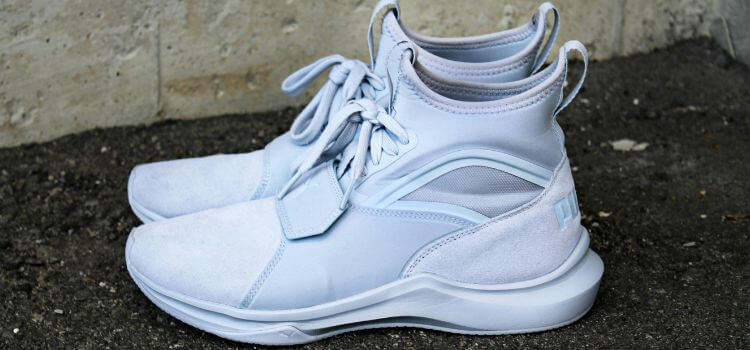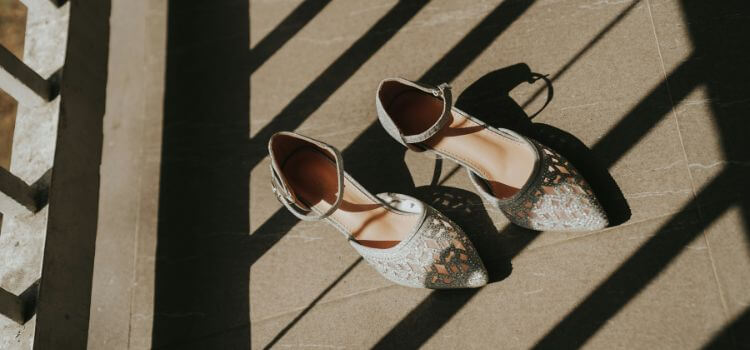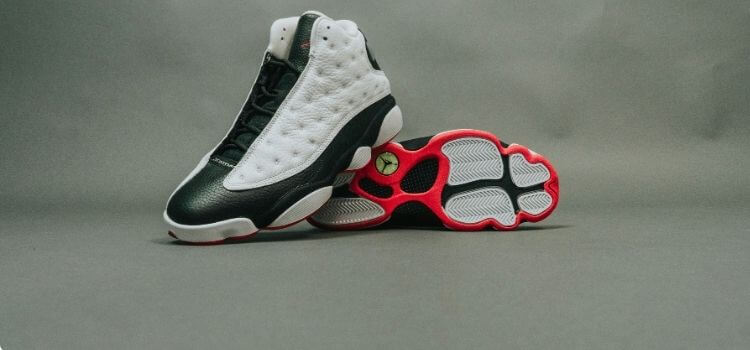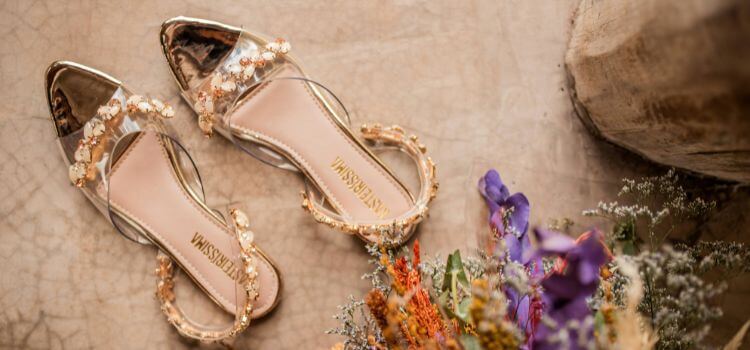As an Amazon Associate, I earn from qualifying purchases
Achilles tendonitis, a common ailment among athletes and non-athletes alike, refers to the inflammation of the Achilles tendon, the thick band of tissue that connects the calf muscles to the heel bone. This condition often results from overuse or repetitive strain on the tendon, leading to pain and discomfort in the back of the heel or ankle.
Understanding the Importance of Proper Footwear

Understanding the importance of proper footwear is crucial for individuals dealing with Achilles tendonitis. The right shoes can alleviate discomfort and promote healing by providing adequate support and cushioning to the affected area. Proper footwear also helps distribute weight evenly and reduce strain on the Achilles tendon, minimizing the risk of exacerbating symptoms.
By investing in shoes with supportive features such as arch support, cushioned heel counters, and flexible soles, individuals can improve their overall foot health and enhance their quality of life.
Features to Look for in Dress Shoes for Achilles Tendonitis
When shopping for dress shoes suitable for Achilles tendonitis, several key features should be considered to ensure optimal support and comfort:
1. Supportive Arch Design
Supportive arch design refers to the structural feature of footwear that provides additional support to the arch of the foot. This design helps distribute weight evenly across the foot, reducing strain on the arch and the Achilles tendon. Shoes with supportive arch designs are beneficial for individuals with Achilles tendonitis as they promote proper alignment and alleviate discomfort during walking or standing. Opting for shoes with contoured footbeds or removable insoles that offer customizable arch support can enhance overall comfort and facilitate the healing process.
2. Cushioned Heel Counter

A cushioned heel counter is a feature found in footwear that involves padding around the back of the shoe, particularly in the heel area. This cushioning provides added support and comfort, helping to reduce friction and pressure on the Achilles tendon. For individuals dealing with Achilles tendonitis, shoes with a cushioned heel counter can help alleviate discomfort and prevent exacerbation of symptoms during walking or standing. Choosing shoes with ample cushioning in the heel area ensures a more comfortable fit and supports the natural movement of the foot while promoting proper alignment and reducing strain on the tendon.
3. Flexible Sole
A flexible sole refers to the part of a shoe’s bottom that bends easily to accommodate natural foot movement. This feature is essential for individuals with Achilles tendonitis as it allows for proper foot flexion and extension while walking or running. Shoes with flexible soles help to reduce stiffness and minimize strain on the Achilles tendon, promoting greater comfort and mobility. By choosing footwear with a flexible sole, individuals can support the healing process and prevent further irritation or injury to the tendon.
4. Adequate Heel Height

Adequate heel height refers to the optimal elevation of the heel in footwear, particularly for individuals with Achilles tendonitis. Shoes with a moderate heel height, typically one inch or less, are recommended to maintain proper alignment and reduce tension on the Achilles tendon. High heels can exacerbate symptoms by placing excessive strain on the tendon, while flat shoes may lack sufficient support. Opting for shoes with an adequate heel height helps to promote stability, distribute weight evenly, and alleviate discomfort associated with Achilles tendonitis, allowing for more comfortable and pain-free movement.
Brands and Models Recommended for Achilles Tendonitis
Several brands offer dress shoes specifically designed to accommodate the needs of individuals with Achilles tendonitis. Some recommended models include:
- Brand A: Model X
- Brand B: Model Y
- Brand C: Model Z
Tips for Buying Dress Shoes for Achilles Tendonitis
When shopping for dress shoes to alleviate Achilles tendonitis symptoms, consider the following tips to ensure a proper fit and maximum comfort:
1. Proper Sizing

Proper sizing refers to selecting footwear that fits correctly and comfortably, without being too tight or too loose. For individuals with Achilles tendonitis, wearing shoes of the right size is crucial to prevent irritation and discomfort. Shoes that are too small can constrict the foot and exacerbate symptoms, while shoes that are too large may cause rubbing and friction. It’s essential to measure both feet and choose the size that accommodates the larger foot, considering width as well as length. By ensuring proper sizing, individuals can support the healing process and alleviate pressure on the Achilles tendon, promoting greater comfort and mobility.
2. Trying Shoes On
Trying shoes on before purchasing is an important step in finding the right footwear, especially for individuals with Achilles tendonitis. When trying on shoes, it’s essential to walk around the store and assess how they feel on your feet. Pay attention to any areas of pressure or discomfort, particularly around the Achilles tendon. Look for shoes that provide adequate support and cushioning while allowing for natural foot movement.
Trying shoes on also allows you to evaluate the fit and ensure there is enough room in the toe box and heel area. By trying shoes on before buying, individuals can make informed decisions and select footwear that promotes comfort and alleviates symptoms associated with Achilles tendonitis.
3. Online Shopping Considerations

When considering online shopping for shoes, there are several factors to keep in mind, especially for individuals managing Achilles tendonitis. Firstly, it’s crucial to familiarize yourself with the retailer’s return policy to ensure hassle-free returns or exchanges if the shoes don’t fit as expected. Look for retailers that offer free returns or have generous return windows to accommodate any sizing issues. Additionally, read customer reviews and sizing guides to get a better understanding of how the shoes fit and whether they are suitable for individuals with Achilles tendonitis.
Lastly, consider brands or models that you have previously tried on and know to be comfortable, as this can reduce the risk of purchasing ill-fitting shoes online. By taking these considerations into account, individuals can make more informed decisions when shopping for shoes online and minimize the risk of discomfort or exacerbating Achilles tendonitis symptoms.
Alternatives to Traditional Dress Shoes
For individuals with severe Achilles tendonitis or specific foot abnormalities, traditional dress shoes may not provide adequate support. Consider the following alternatives:
1. Dressy Orthopedic Shoes
Dressy orthopedic shoes are stylish footwear designed with therapeutic features to provide support and comfort for individuals with various foot conditions, including Achilles tendonitis. Unlike traditional orthopedic shoes, which may prioritize functionality over style, dressy orthopedic shoes combine fashionable designs with supportive elements to cater to formal or professional settings.
These shoes often feature features such as supportive arches, cushioned heel counters, and flexible soles to alleviate pressure on the Achilles tendon while maintaining a polished appearance. By opting for dressy orthopedic shoes, individuals with Achilles tendonitis can enjoy the benefits of proper support and comfort without sacrificing their personal style or professional
2. Custom Orthotics

Custom orthotics are specially crafted shoe inserts designed to provide individualized support and alignment for people with specific foot conditions, including Achilles tendonitis. Unlike over-the-counter inserts, custom orthotics are made to fit the unique shape and contours of the wearer’s feet, offering personalized support and comfort. These orthotics can help redistribute pressure away from the Achilles tendon, reducing strain and alleviating discomfort during walking or standing.
Custom orthotics are typically prescribed by a podiatrist or orthopedic specialist after a thorough evaluation of the individual’s foot mechanics and gait. By wearing custom orthotics in their shoes, individuals with Achilles tendonitis can improve their foot function, enhance overall comfort, and promote better alignment to support the healing process.
Care and Maintenance of Achilles Tendonitis Shoes
To prolong the lifespan of dress shoes designed for Achilles tendonitis and ensure continued comfort and support, follow these care and maintenance tips:
1. Cleaning and Drying
Cleaning and drying your shoes is vital for individuals managing Achilles tendonitis to maintain foot health and prolong shoe durability. Begin by gently removing dirt and stains using a soft brush or cloth, ensuring not to damage the material. To tackle stubborn stains, opt for a gentle detergent or specialized shoe cleaner. After cleaning, allow the shoes to air dry naturally in a well-ventilated area, avoiding direct sunlight and heat sources. Stuffing them with newspaper or using shoe trees helps absorb moisture and maintain their shape. Regular cleaning and proper drying practices not only prevent odor and bacteria but also contribute to overall foot comfort and hygiene.
2. Storage Tips

Proper storage of shoes is essential for individuals managing Achilles tendonitis to preserve shoe integrity and prevent discomfort. Store your shoes in a cool, dry place away from direct sunlight and extreme temperatures, as heat and humidity can damage the materials and cause them to deteriorate more quickly. Avoid stacking shoes on top of each other, as this can misshape them and put unnecessary pressure on the Achilles tendon area.
Instead, use shoe racks or shelves to keep them organized and maintain their form. Consider using shoe trees or inserts to help maintain the shape of your shoes and absorb moisture, especially if they’re made of leather. By following these storage tips, you can prolong the life of your shoes and ensure they continue to provide the support and comfort needed for managing Achilles tendonitis.
Conclusion
Selecting the right footwear is crucial for individuals managing Achilles tendonitis. Shoes with supportive features such as arch support, cushioned heel counters, and flexible soles can help alleviate discomfort and promote healing by reducing strain on the Achilles tendon. Proper sizing and trying shoes on before purchasing are essential steps to ensure a comfortable fit and minimize irritation.
For those unable to find suitable dress shoes, alternatives like dressy orthopedic shoes or custom orthotics offer stylish yet supportive options. By prioritizing footwear that provides adequate support and comfort, individuals can manage Achilles tendonitis more effectively and maintain their mobility and quality of life.
As an Amazon Associate, I earn from qualifying purchases

Leave a Reply